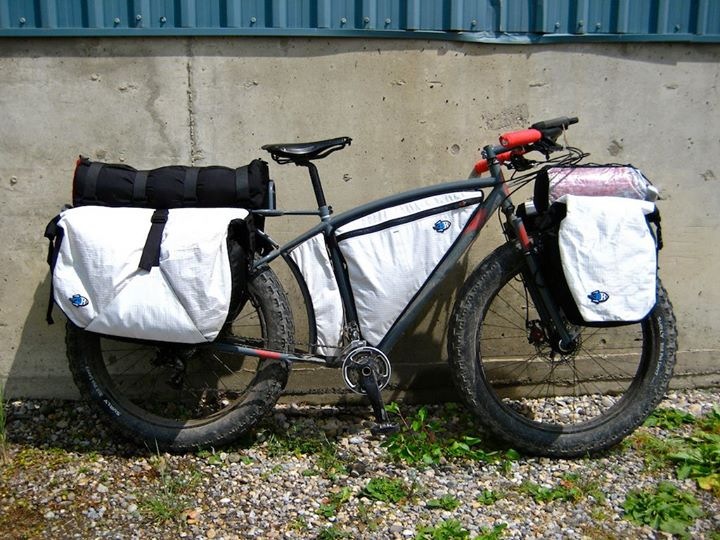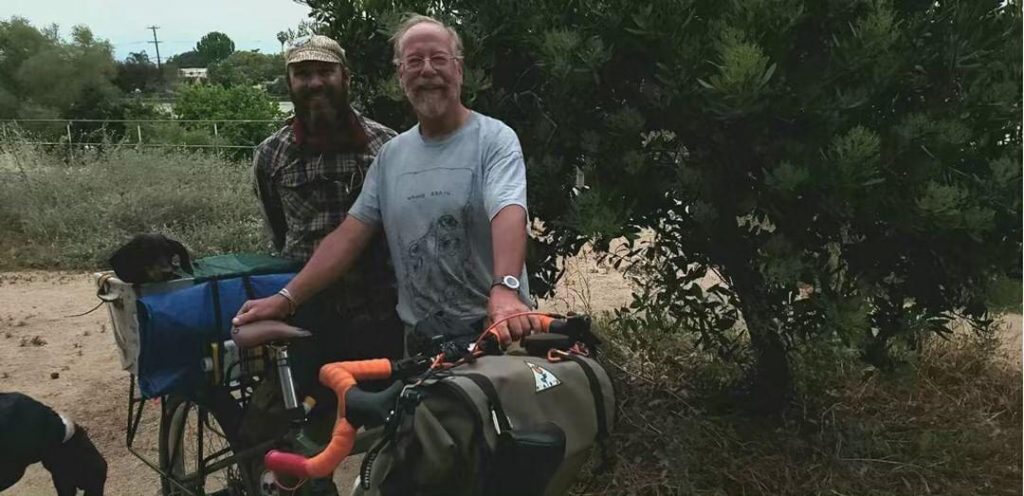I first had coffee outside with the L.A. River Camp Coffee crew a couple years ago while out on a visit and doing it again was a priority this time, given that I’d legit biked into town. By way of explanation, LARCC is an informal group of cyclists, organized originally by Errin Vasquez, who meet at a small park on the L.A. River bike path to brew coffee and shoot the breeze – my kind of group! First thing Wednesday morning, I put Lotte in her basket and pedaled 5 miles north to meet the group. It was – no surprise – a ton of fun and there was lots of interesting bike talk.
Errin and I were talking about Molly Fin (the bike) and frame materials; I said something about a steel mid-tail being a dream machine and he filled me in on the ur-midtail – the bike that inspired the Salsa Blackborow. In 2013, Rick Hunter built a bike for Scott Felter (bagmaker/Porcelain Rocket). Not just any bike, obviously, but a mid-tail fat bike for a ride along Austrailia’s Canning Stock Route. More on the route in a minute, but check out this bike!!!!
Lots of cargo capacity, not because Scott planned to take an #adventureteckel with him, but because the route requires that folks ride with 30-35 days of food and 4-5 days of water. If you want to read about the ride, Tom Walwyn’s blog is the place to start; he has a great Flickr album, too.
I’d never heard of the Canning Stock Route, so I googled it up. It’s clearly a tangent I’m going to spend some time reading about. I’ll quote from Wikipedia:
The Canning Stock Route is a track that runs from Halls Creek in the Kimberley region of Western Australia to Wiluna in the mid-west region. With a total distance of around 1,850 km (1,150 mi) it is the longest historic stock route in the world.
The stock route was proposed as a way of breaking a monopoly that west Kimberley cattlemen had on the beef trade at the beginning of the 20th century. In 1906, the Government of Western Australia appointed Alfred Canning to survey the route. When the survey party returned to Perth, Canning’s treatment of Aboriginal guides came under scrutiny leading to a Royal Commission. Canning had been organising Aboriginal hunts to show the explorer where the waterholes were. Despite condemning Canning’s methods, the Royal Commission, after the Lord Mayor of Perth, Alexander Forrest had appeared as a witness for Canning, exonerated Canning and his men of all charges. The cook who made the complaints was dismissed and Canning was sent back to finish the job.
I’m especially interested in the Royal Commission and the cook, Edward Blake. I wonder if my initial take – that for things to have risen to Royal Commission level, the accusations were serious – is indeed correct. I’ve got no background in Australian history, so no context to judge against; looks like an opportunity for me to learn. Thank you, Errin, for exciting my curiosity!




